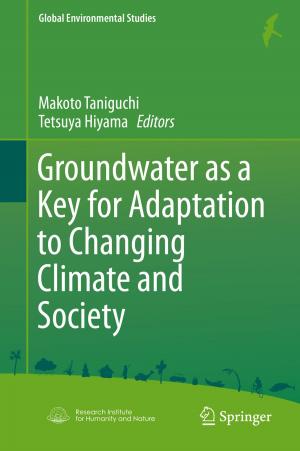Protection of the Three Poles
Nonfiction, Science & Nature, Science, Biological Sciences, Ecology, Nature, Environment, Environmental Conservation & Protection| Author: | ISBN: | 9784431540069 | |
| Publisher: | Springer Japan | Publication: | March 19, 2012 |
| Imprint: | Springer | Language: | English |
| Author: | |
| ISBN: | 9784431540069 |
| Publisher: | Springer Japan |
| Publication: | March 19, 2012 |
| Imprint: | Springer |
| Language: | English |
The Arctic, the Antarctic, and the Hindu Kush-Himalayas form a trio of terrains sometimes called “the three poles”. Mainly composed of rock, snow, and ice, these precious regions, which are home to many unique species such as the polar bear, the emperor penguin, and the snow leopard, contain the primary water resource of this planet and directly shape our climate. This book presents a first-ever global assessment and progressive review of the three poles and demonstrates the urgent need for their protection. Sins of the past have irrevocably harmed and threatened many of the unique qualities of these regions, and the future looks bleak with the global population forecast to reach 9 billion by 2060, and with climate change on the rise. Presented here is a wide-reaching and coherent overview of the three poles’ biodiversity, habitats, and ongoing destruction. Failed protection and social targets set by the United Nations and other bodies are exposed while economic growth, unconstrained or inappropriate development, and urban sprawl are promoted unabated. Polar regions play a major role in the global agenda as they are rich in oil and other resources, marking them for contamination, overfishing, and further degradation. Tourism in the Antarctic has benefited from enlightened self-regulation, but there are signs that this is changing, too. The chapters of this book are written by experts in their fields, and their evidence leaves no doubt that we already live beyond our carrying capacity on a finite but decaying space. A global protection role model and several outlook scenarios are proposed to help set in motion polar protection priorities that are actually valid. Humanity has demonstrated through international treaties such as the Antarctic Treaty and the Madrid Protocol that we can put the interests of the planet as a whole first. This must become the norm, not the exception.
The Arctic, the Antarctic, and the Hindu Kush-Himalayas form a trio of terrains sometimes called “the three poles”. Mainly composed of rock, snow, and ice, these precious regions, which are home to many unique species such as the polar bear, the emperor penguin, and the snow leopard, contain the primary water resource of this planet and directly shape our climate. This book presents a first-ever global assessment and progressive review of the three poles and demonstrates the urgent need for their protection. Sins of the past have irrevocably harmed and threatened many of the unique qualities of these regions, and the future looks bleak with the global population forecast to reach 9 billion by 2060, and with climate change on the rise. Presented here is a wide-reaching and coherent overview of the three poles’ biodiversity, habitats, and ongoing destruction. Failed protection and social targets set by the United Nations and other bodies are exposed while economic growth, unconstrained or inappropriate development, and urban sprawl are promoted unabated. Polar regions play a major role in the global agenda as they are rich in oil and other resources, marking them for contamination, overfishing, and further degradation. Tourism in the Antarctic has benefited from enlightened self-regulation, but there are signs that this is changing, too. The chapters of this book are written by experts in their fields, and their evidence leaves no doubt that we already live beyond our carrying capacity on a finite but decaying space. A global protection role model and several outlook scenarios are proposed to help set in motion polar protection priorities that are actually valid. Humanity has demonstrated through international treaties such as the Antarctic Treaty and the Madrid Protocol that we can put the interests of the planet as a whole first. This must become the norm, not the exception.















